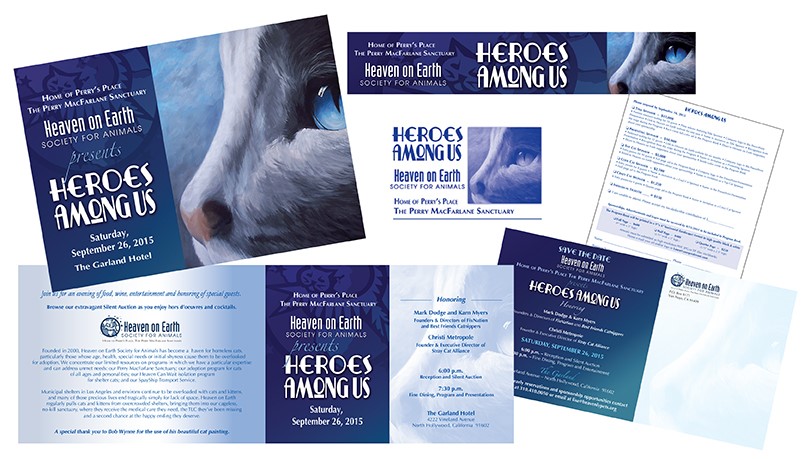The goal of your fundraising event is to attract attendees and sponsors to help raise money for your cause
and organization. You want your fundraising event to not only attract a lot of donors, (yes!), but, equally as important, showcase your organizations’ mission within the community, and raise awareness as to its good works.
Great graphics can bring attention to both your event and your mission!
Artistic and meaningful design can enhance the stature of your event, enticing the very attendees and sponsors you wish to attract! It promises your guests fun and excitement and a sense of what the mission is, all dressed up in a beautifully designed presentation.
The event design should sparkle, intrigue, and make an impression!
Choosing a theme and carrying it out graphically throughout your key artwork and collateral pieces lends
cohesion to your marketing. It begins to brand your event in your potential donors’ minds.
Always hire a professional designer. The event company you have wisely chosen to produce your event will have recommendations. Listen to them.
Good event design begins with your theme. The designer will take your ideas and design the concept artwork.
The primary goal: to make it a signature special event that shouldn’t be missed!
1. Development of theme and key art. Generally, two concepts are presented. Working with a professional designer can help to develop and produce a polished vision for the event. The designer should be practiced in professional design, budgets and deadlines, and empathetic to the larger cause of the organization.
Once the final art is approved, it is now branded into the following collateral pieces used at each stage of the marketing campaign.
2. Event logo and header: These initial graphic elements are used in all your early solicitation efforts. This will start to create a visual connection to the event for potential guests and donors.
3. Save the Date/Digital Eblast: This piece, whether a printed postcard or in a digital format, announces the event well in advance of the event date to start building interest, and get the date marked on people’s calendars.
4. Invitation package. This signature piece presents the event details in an attractive and well-designed presentation. And also, importantly, delivers the sponsorship opportunities and donor levels, as well as the RSVP. The invitation can also include an insert with the “sponsors to date”, to spur others to donate as well. This is generally the most impressive and important piece of your event marketing.
5. Program Book: This is the journal that commemorates the event! Within its pages there is valuable information about your organization, your event sponsors, advertisers, and vendors. This item goes home with the attendees. This can be a selling point for contributors and advertisers to the program. A PowerPoint sponsor loop during the event, and additional advertising both before and after the event also carries the brand to the audience.
A fundraising event can and should be branded from the original concept design, throughout the marketing and solicitation stage, and on to the event itself. Exciting and interesting graphics work in tandem with your organizations fundraising effort to create excitement for potential attendees and donors.
After all, your signature fundraising event plays an important role in raising money for your organization, and in
developing relationships with new and returning donors that carry into the future.
Impactful professional graphic design can brand your event. This in turn enhances the success of your organizations fundraising, ensuring that your event is both successful and memorable!
By Elizabeth MacFarland - Graphic Design



